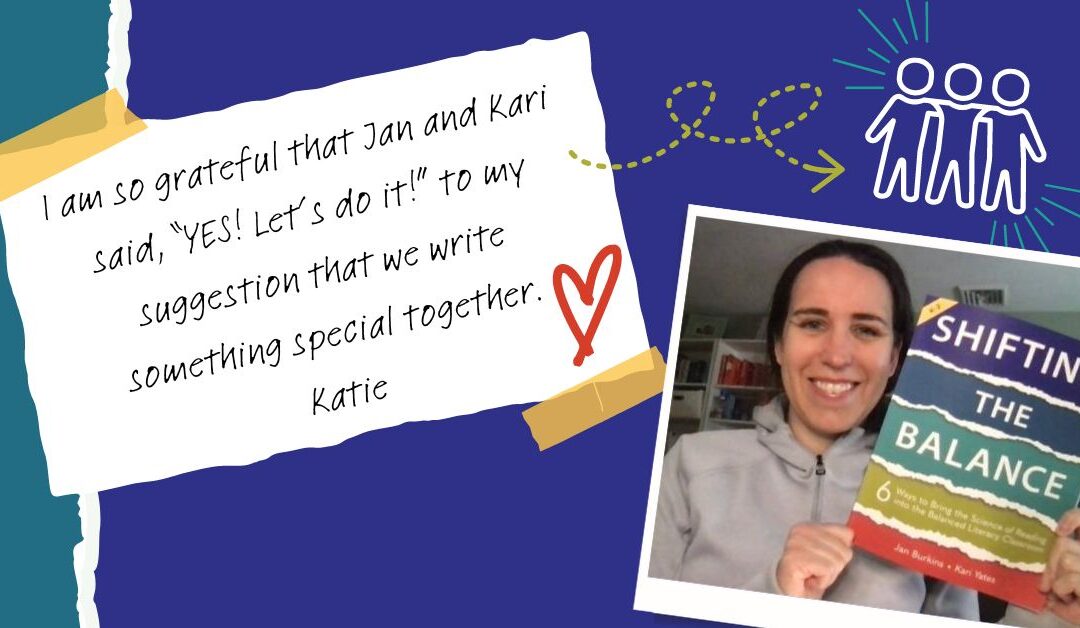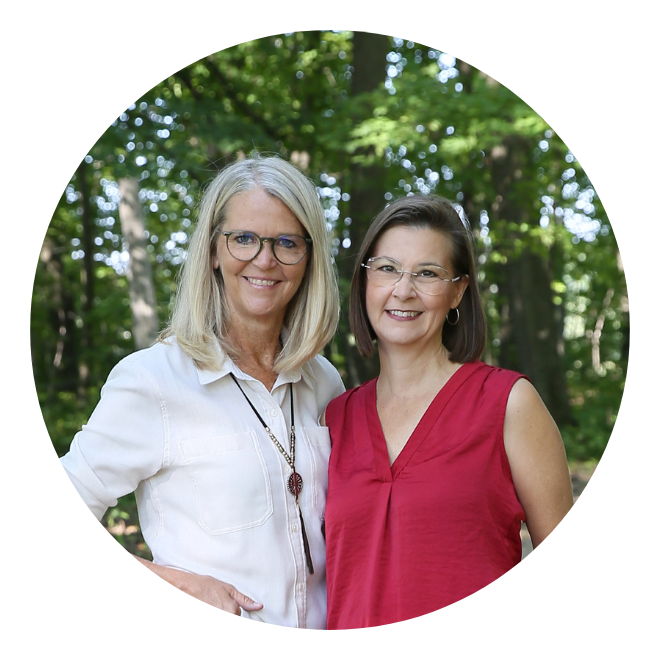With Shifting the Balance: 6 Ways to Bring the Science of Reading into the Upper Elementary Classroom about to be released, you might be wondering how this second Shifting the Balance book came to be. Well, there’s a story there that Jan, Kari, and I thought was worth sharing and that might even feel familiar to some of you. When the first Shifting the Balance book landed on my doorstep in the winter of 2021, I knew that Jan and Kari had done something really special for the field, helping to clear up misunderstandings about current literacy practices that were making learning to read harder, rather than easier, for children.
Like many of you, I loved their writing style, the book’s structure, and how they made the sciency stuff really understandable. They also honored the time and talents of teachers in ways that felt really important to me as a former classroom teacher turned teacher educator. And on February 27, 2021, almost as soon as I finished reading the final pages of the book, I reached out to Jan and Kari in an email, thanking them for the gift that Shifting the Balance gave the literacy world. Here’s a bit from my original email, which went out with the subject line “Brilliant, Brave, & Beautiful”:
“I am so grateful for you and your beautiful new book– Shifting the Balance. I am in awe of your capacity to make the reading research comprehensible and digestible for teachers. You write with enormous respect for educators and researchers alike. This book will change the lives of countless children. It is exactly what the world needs right now. It is also what I need right now, both personally and professionally.”
And it’s true, with a teacher’s head, I had a deep respect for the work they had done, but I also felt enormous gratitude with a mother’s heart. You see, my youngest son was diagnosed with dyslexia near the end of his third-grade year, right at the time when the first Shifting the Balance came out. Matthew is the kind of boy who wishes he would get a letter from Hogwarts in our mailbox so he could join Harry Potter in the wizarding world. And he has an impressive vocabulary that would turn the heads of adults. But, as words in the books he wanted to read got longer and less familiar, he struggled to accurately decode. And spelling simple words would bring tears to his eyes at the kitchen table. At the same time, my oldest son, Jack, was starting middle school. In many ways, Jack is built for school. But, despite being good at it, reading just isn’t something he chooses to do on his own. So, both of my sons (and many former students who used to keep me up at night) were very much on my mind when I read the first Shifting the Balance book. Here’s more from that original letter:
“Matthew is a boy with a huge heart and wild imagination. Matthew has the double issue of both phonological awareness and rapid automatic naming challenges. Yet, he soars at listening comprehension, which has allowed him to compensate up until now. As his mother and as an educator, we wish that he could have had the kind of instruction that worked with his brain. And our older son, Jack, is a reluctant reader despite years of strategy instruction and immersion in wonderful children’s literature. But I feel hopeful as I think of the millions of children whose teachers will now know how to teach children like Matthew and Jack better. Your book will change children’s lives forever.”
Finally, in that letter two years ago, I also took a huge leap of faith. I planted the seed that maybe together, the three of us could write something special for upper elementary teachers to help them make sense of reading science, too.
“I wanted to share that I’ve been doing workshops for upper elementary and middle school teachers over the last year on how to bridge rich content for knowledge development with research-based strategy instruction. It’s my response to the knowledge-side of the science of reading. Are you thinking of doing a 3-5 version of Shifting the Balance? I’d love to connect if you would like a partner on that.”
As it turns out, all three of us – all invested in working toward reading reconciliation and an end to the reading wars – were thinking about readers beyond second grade and about those K-2 students who were already making strong progress as readers. We were also noticing (happily) that more and more research studies, podcasts, and blog posts were calling attention not just to decoding and foundational skills but also to comprehension and knowledge building. Once the amazing team at Stenhouse got behind our project, it took us more than two years to get this book ready to go into the world. There was a lot to grapple with – not the least of which was figuring out how three people, including a new writer joining an established writing team–would collaborate. Then, we began what the six shifts in this new book would actually be. We spent countless hours pouring over the scientific research–especially several important meta-analyses that came out while writing this book. We worked to nail down key misunderstandings and high-leverage routines, just as Jan and Kari had in the K-2 book. And then we wrote, revised, revised some more, and revised even more – right up until the final deadline. We put a lot of love and care into the book. We did all of this in hopes that this new Shifting the Balance book will help educators (like you) help more children (like Matthew and Jack) unlock the secrets of the written code and follow their own big dreams, whatever those may be. The book is rolling off the presses as I write this, and we are excited that we will soon get to share it with you. In the meantime, I am so grateful that Jan and Kari said “YES! Let’s do it!” to my suggestion that we write something special together. And I am also grateful for your willingness to step into this head space and heart space with us as you look for ways to make learning to read easier, not harder, for the children you serve. With love and gratitude, Katie



As a teacher lucky enough to have taken some of Dr. Cunningham’s workshops, I am thrilled and excited for the upper elementary version of Shifting the Balance. I think she is the perfect person to help Jan and Kari bring the shift to grades 3+ and to reiterate that all strands of the reading rope need to be addressed.
Thank you, Ginny, for this enormously kind endorsement. We’d love your feedback when you get a chance to dive into the book. Thank you for all that you do for children.